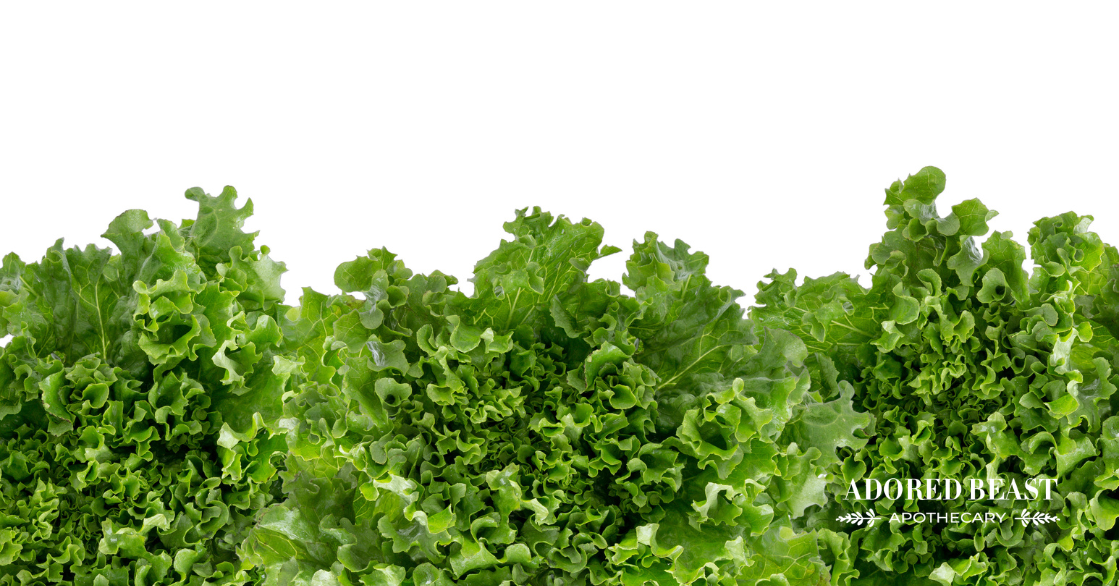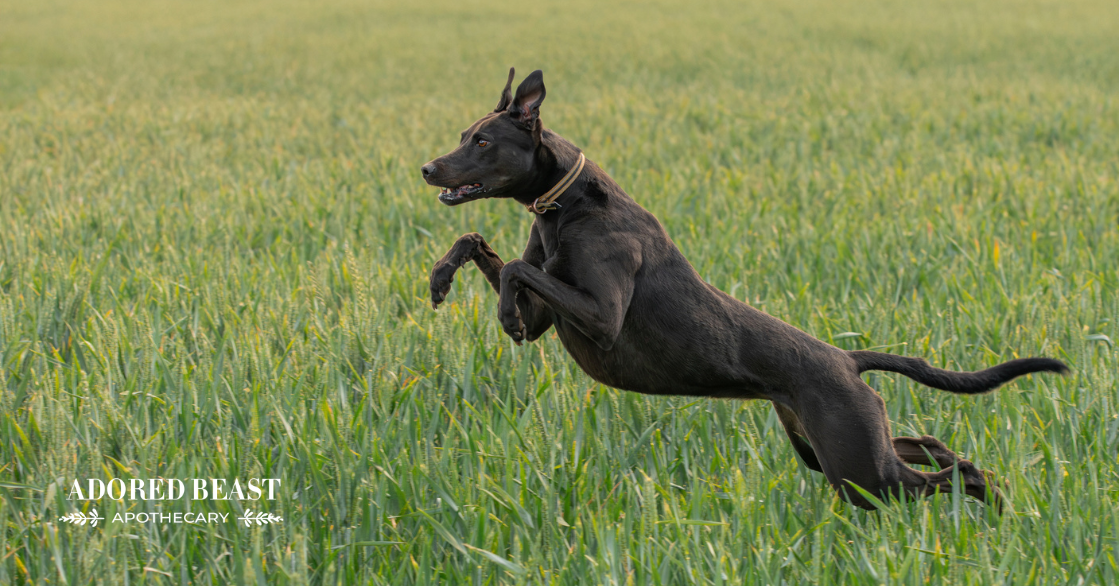Lettuce: often considered a carrier for other things, the foundation for something better (like dressing). No, I’m just kidding, lettuce is great. But it often gets forgotten about as a valuable vegetable.
When you’re crunching on a fresh salad, you might wonder: Can dogs eat lettuce?
Let’s explore why this leafy green is more than just rabbit food…and if it can support your dog’s health. Cronch, cronch, cronch…
Can Dogs Eat Lettuce?
Can dogs eat lettuce? The good news is, yes! Lettuce is not only safe for dogs, but it can also be a healthy, low-calorie treat packed with hydration and gentle nutrients. While it won’t replace more nutrient-dense veggies, lettuce can play a refreshing role in your dog’s diet when fed in moderation and rotation.
Lettuce is mostly made up of water, making it hydrating and easy on the digestive system. Though it’s not the most nutrient-rich vegetable, it still offers gentle benefits that can support your dog’s overall wellness:
- Hydration boost – Lettuce is over 90% water, which can be especially helpful in warmer months or for dogs who need extra moisture in their diet.
- Digestive support – The fiber content helps promote healthy digestion and regular bowel movements.
- Low-calorie snack – Great for dogs who need to lose or maintain weight without sacrificing treat time.
- Vitamins and minerals – Lettuce contains small amounts of vitamins A, C, and K, along with folate and antioxidants that help fight free radicals.
Adding lettuce to your dog’s diet now and then as part of a rotation of fresh, dog-safe fruits and vegetables can help:
- Prevent boredom with the same foods
- Reduce risk of food sensitivities that can come from overfeeding one ingredient
- Expose your dog to a wider variety of micronutrients
Now, not all lettuce is created equal. Some types offer more benefits than others:
Romaine Lettuce: The best option nutritionally. It contains more fiber, vitamin A, and folate than iceberg and has a crisp texture dogs often enjoy.
Green Leaf and Red Leaf Lettuce. These varieties are rich in antioxidants and slightly more nutrient-dense than iceberg. They’re soft and easy to chew, making them good for dogs of all ages.
Iceberg Lettuce. While safe, it’s mostly water with very little nutritional value. It can still be a hydrating treat, but don’t rely on it as your dog’s main veggie source.
Tips for Feeding Lettuce to Dogs
To make the most of this crunchy green treat, follow these simple tips:
- Wash thoroughly – Always rinse lettuce to remove pesticides or bacteria.
- Chop into small pieces – Avoid large leaves that could be a choking hazard, especially for smaller dogs.
- Serve raw or lightly steamed – While raw lettuce is fine for most dogs, a quick steam can make it easier to digest if your pup has a sensitive tummy.
- Skip the salad dressing – No oils, spices, garlic, onions, or salty toppings—just plain lettuce is best.
- Start slow – Introduce any new food in small amounts to watch for digestive upset.
Think of lettuce as one piece of a bigger picture. Along with other veggies like carrots, green beans, zucchini, or leafy greens like kale (in small amounts), rotating fresh produce supports a healthy, balanced diet.
When to Avoid Lettuce
While lettuce is safe for most dogs, it’s best to avoid it if your dog:
- Is prone to digestive issues like diarrhea (especially with iceberg)
- Has had a bad reaction to leafy greens before
- Has trouble chewing or swallowing raw foods
So, can dogs eat lettuce? Yes, and it can be a fun, fresh way to add crunch and hydration to your pup’s meals. While it’s not a nutritional powerhouse, it’s a safe and healthy addition to a well-balanced rotation of whole foods. Next time you’re making a salad, feel free to toss your dog a crisp, clean bite of romaine or leafy green. Just skip the croutons!












